
11 minute read
Deep in the Andes: Discovering the Remote Rivers of the Chilean Fjords
DEEP IN THE ANDES: Discovering the Remote Rivers of the Chilean Fjords
South of the city of Puerto Montt in Chile, the Andes Mountains rise straight from the Pacific Ocean, forming a natural maze of countless fjords, islands, valleys, and rivers. Many of these remote waterways remain unnamed and don’t even appear on maps. The area, roughly the size of the UK and Switzerland combined, is home to only half a million people - 80% of whom live in a handful of cities and small villages. This leaves the majority of the 280,000-square-kilometer territory mostly uninhabited.
By CRISTIAN DUFFLOCQ
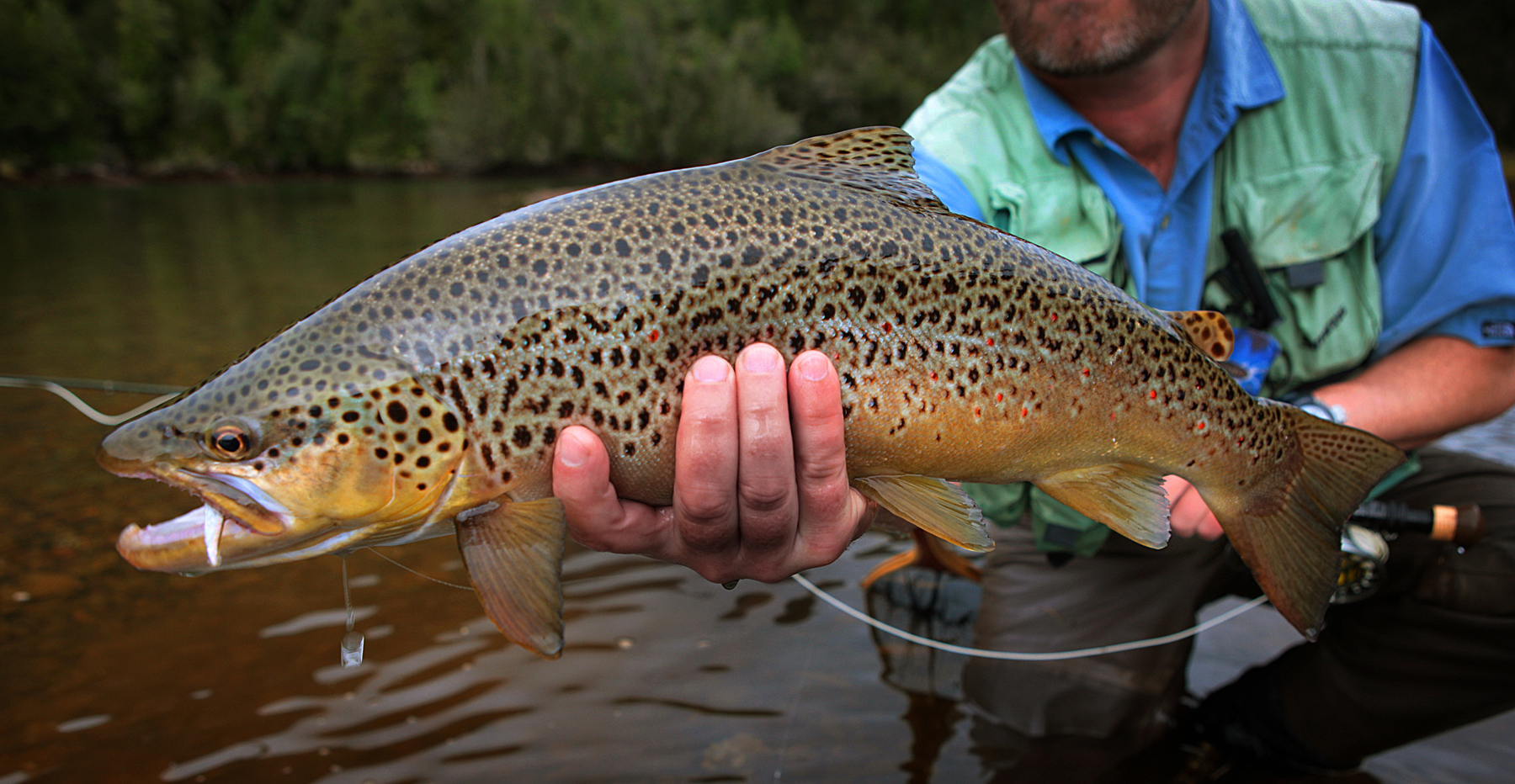
Years ago, my brother Marcelo was flying over this region in a floatplane, returning from a trip exploring remote rivers near the Argentine border. Gazing down, mesmerized by the crystal-clear rivers flowing into the ocean, he asked the pilot - an avid fisherman himself - if they could descend into one narrow fjord. The pilot eagerly obliged. After securing the plane, they walked upriver and began fishing near the first current.
They had no idea whether they’d find fish at all - and if they did, what kind. Trout and salmon are not native anywhere in the world south of the equator, and Chile is no exception. The river flowed clear, green-blue through a narrow valley cloaked in virgin temperate rainforest, all the way to the snow-covered peaks. There were no towns, roads, or signs of human presence - truly untouched wilderness.

During low tide, the lower part of the river flowed directly over the seafloor. Rocks were covered with barnacles and marine algae, and under nearly every rock were at least half a dozen small crabs, 1–3 cm in diameter. In the shallows swam clouds of minnows; in deeper water, a variety of other fish of all shapes and sizes.
Compared to the river above the tidal zone, this section was clearly much richer in food. There was sustenance for fish of every size - from 2 cm minnows to 1-meter brown trout. If you were a trout, salmon, or any fish, this was the place to live. You could say it was the “Fertile Crescent” of the fish world.
The water looked like it should hold game fish - lots of them, and large ones. After only a few minutes, my brother hooked into something. In an instant, the fish took off on a long, fast run downstream. Marcelo had to sprint over rocks to avoid running out of line. Earlier that day, he and Chris - the pilot - had been fishing dry flies on small mountain streams using 5-weight rods. Clearly, they were under-equipped. This was a good fish, and they were at least hoping for a look.

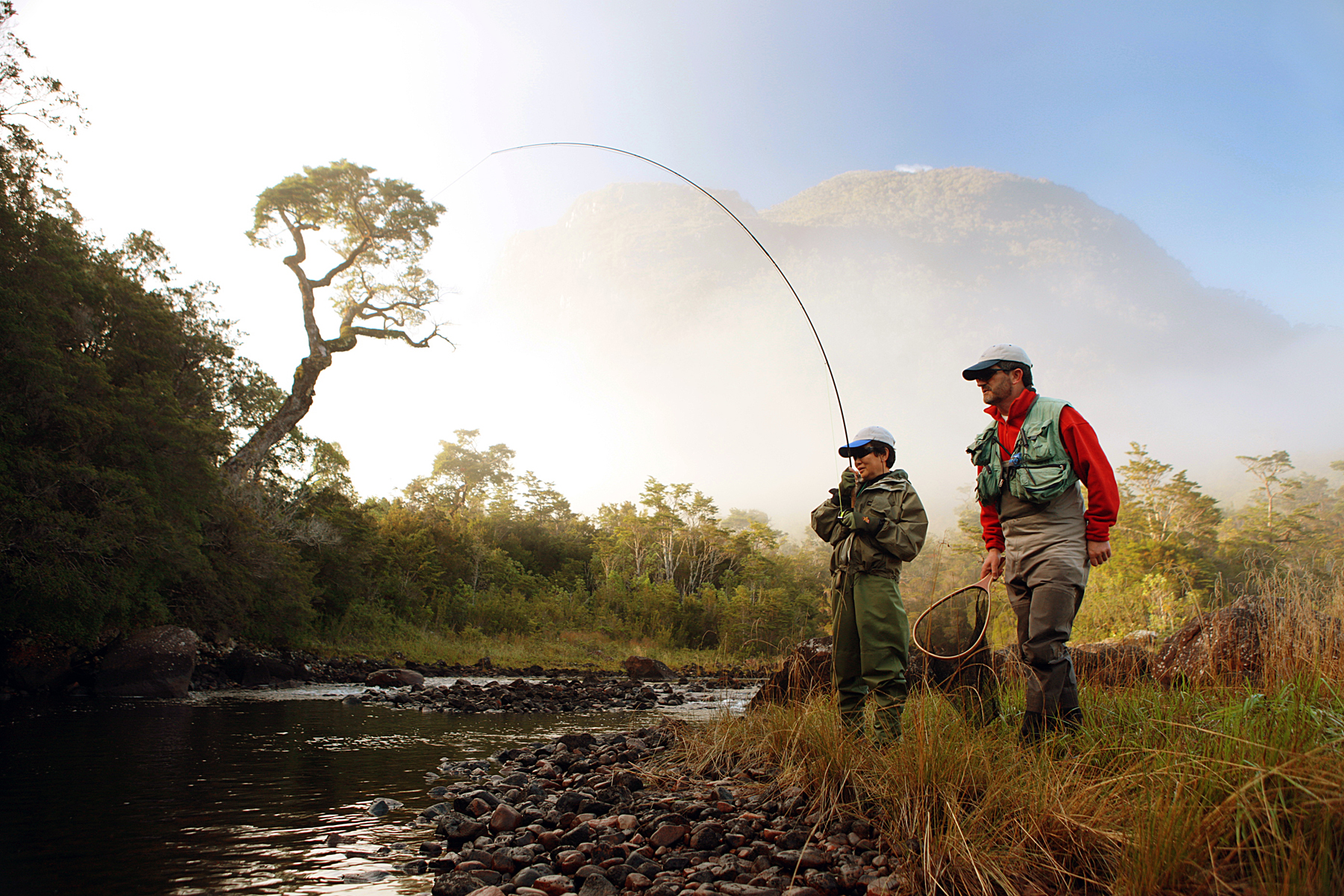
Trout and Robalos
To their surprise, the fish resembled a rainbow trout, though with barely any red band and few spots. It had bright silver flanks, a blue-green back, and a more streamlined shape - similar to a steelhead, which we’d only seen in photos. It measured 55 cm and weighed about 2.5 kg. Re-energized, they kept fishing and each landed another of the same silver trout, both slightly smaller but equally strong. They also hooked a beautiful brown trout and a couple of 2–3 kg robalos - a native ocean fish that ventures up Chilean rivers. Robalos pull hard and make a few short but powerful runs. Though they give up quicker than trout, the initial bursts are impressive. (A few years later, I witnessed a 4 kg robalo yank a rod from an angler’s hands.)
The brown trout was golden, with bold black spots and broad shoulders, its small head suggesting a relatively young age for its size. It broke off under some logs before they could get a proper look, but it felt like a solid 4 kg. Unlike most browns in the region, this one jumped clear out of the water several times.
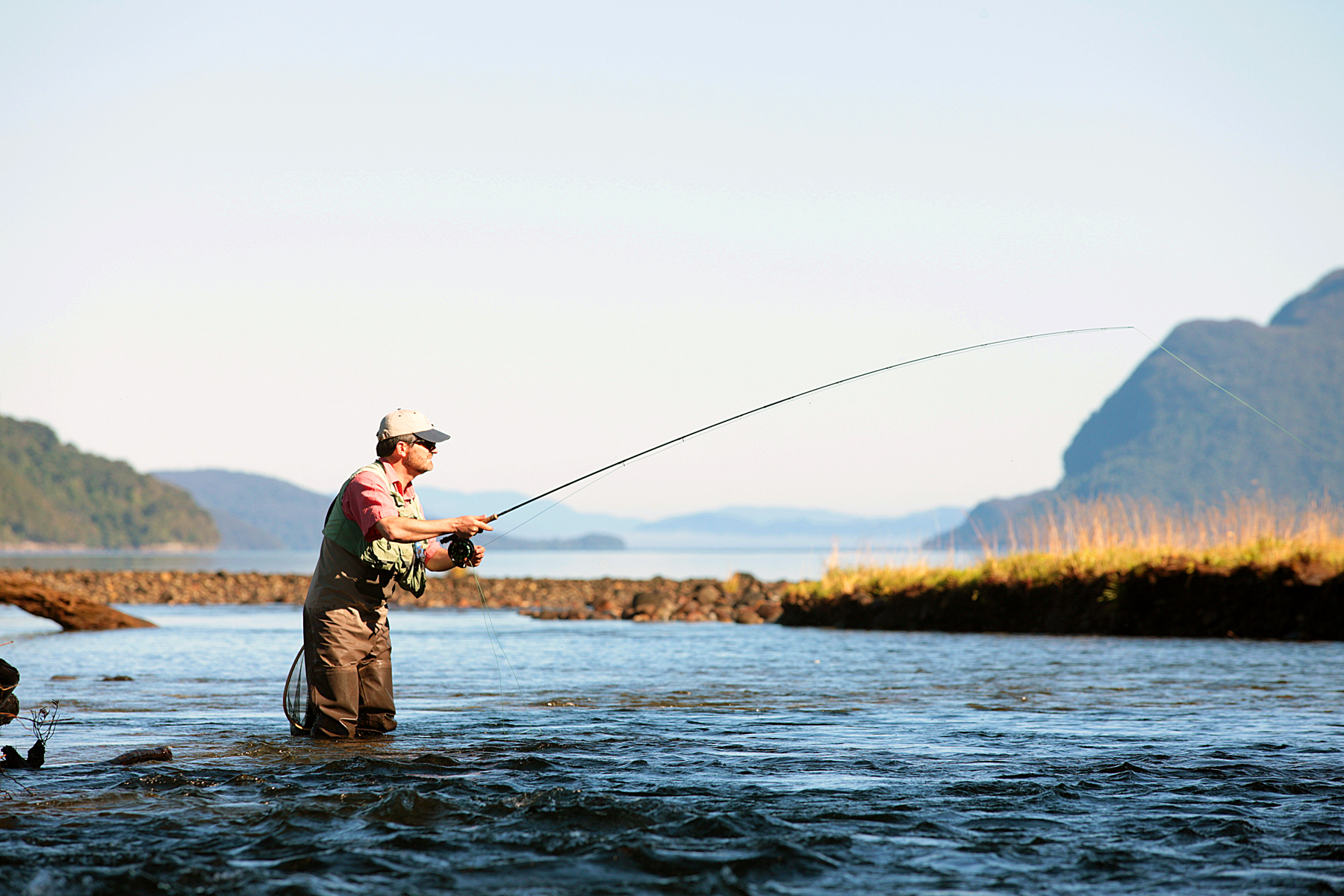
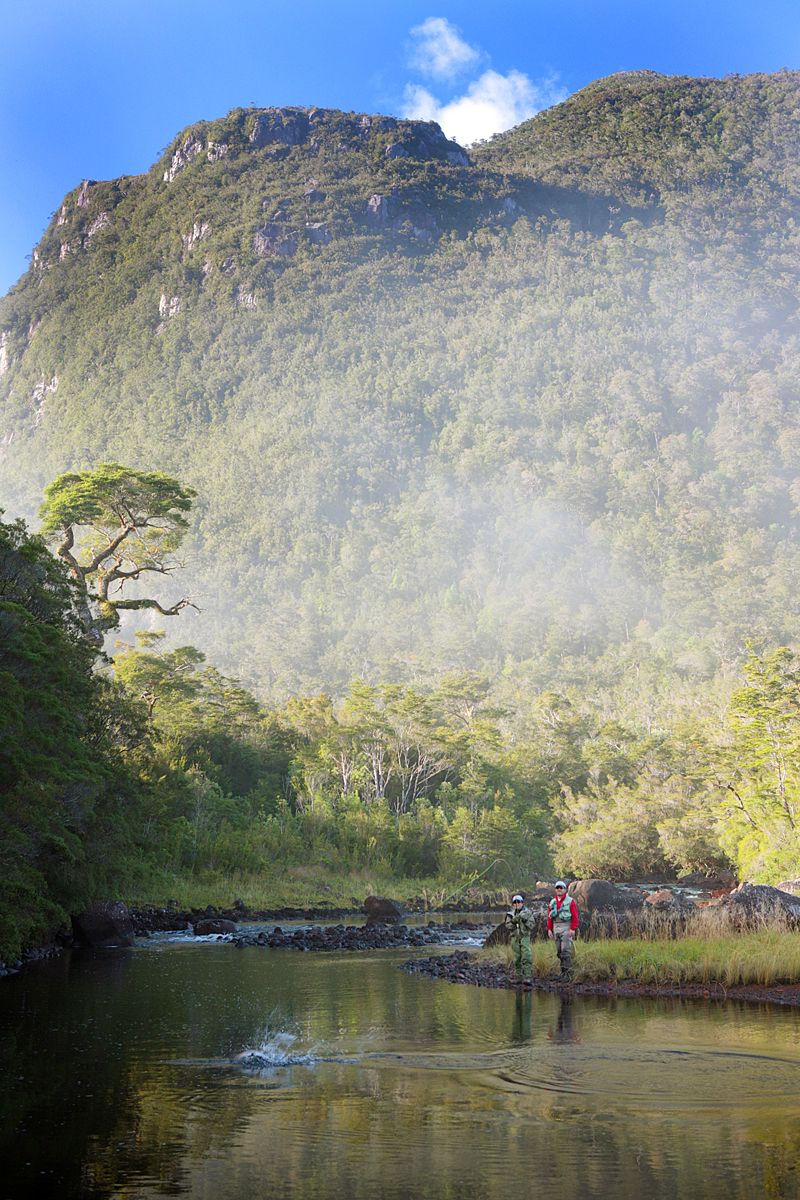
The excitement was palpable. Marcelo recalls pausing from the action to look around - only to realize the scene had changed. The tide was coming in fast and silently. The rocks and logs had disappeared. The river now ran wider, deeper, and slower. Looking at the shore, he could see the water creeping up. It was time to go. Around full moon, the tides near Puerto Montt can reach over 6 meters; further south, tides are smaller, with the largest around 2.5 meters. They released all the trout and kept the robalos for ceviche - diced raw fresh fish marinated in lemon juice and mixed with chopped purple and green onions, red pepper, cilantro, olive oil, white vinegar, salt, and freshly ground black pepper.
Everyone was excited, but the questions outnumbered the answers. They weren’t supposed to find trout there, yet they clearly had - and the fish were reproducing. Someone must have introduced them. But who? And when? The river was inaccessible by road, with no people around. It didn’t make sense.
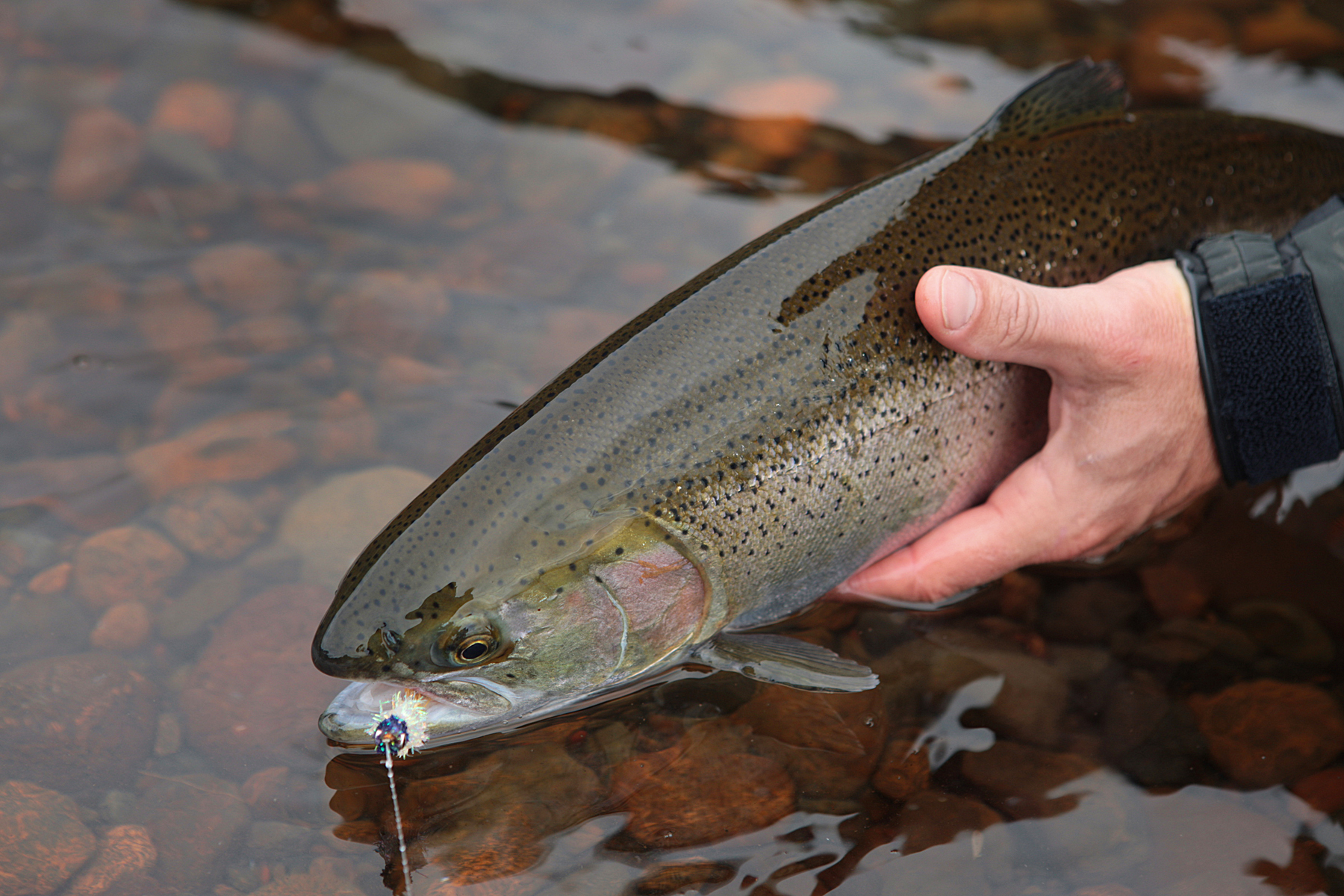
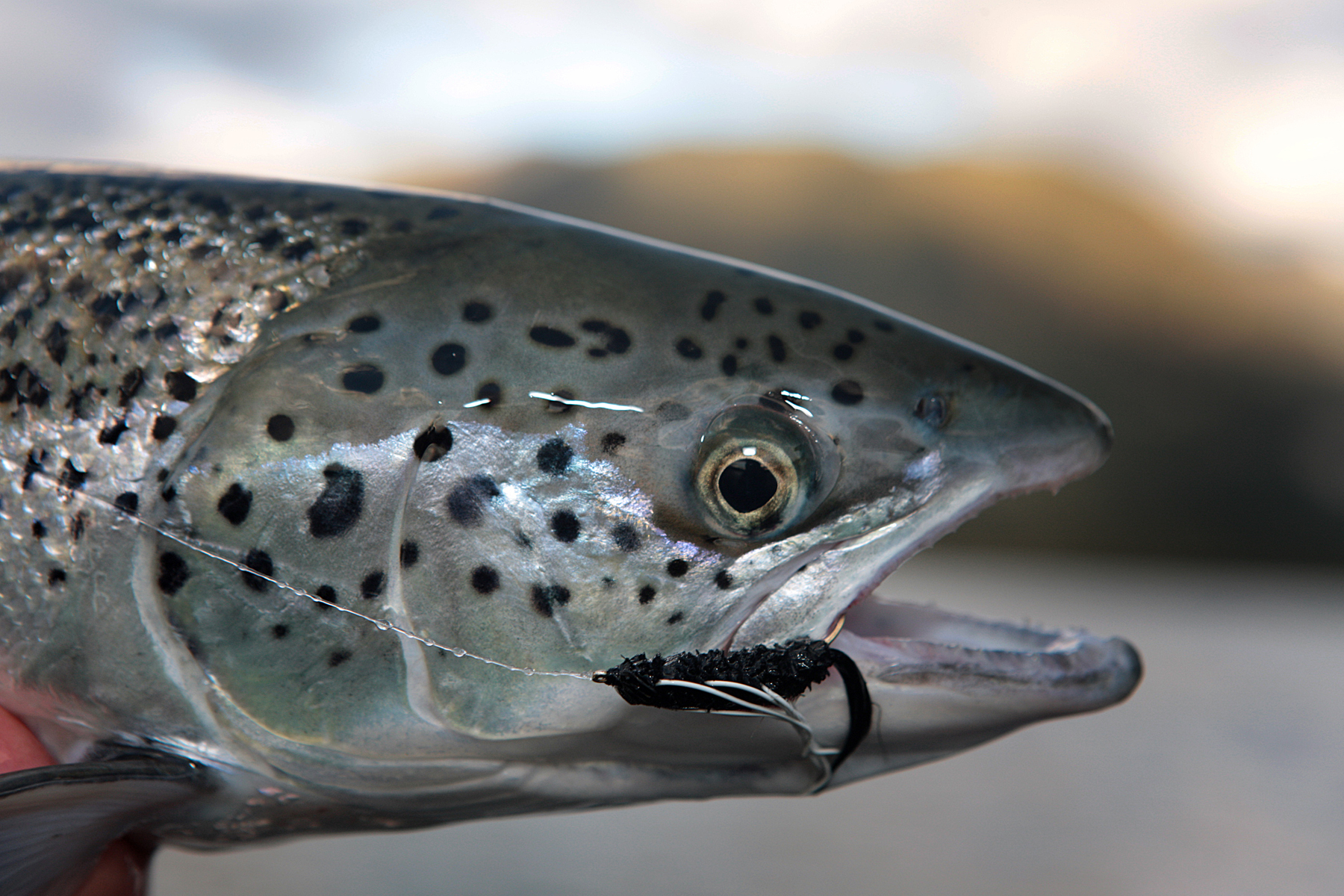
The good news?
The bug had bitten: we had to explore more of these coastal rivers. The good news? There were thousandsstretching from Puerto Montt all the way to Tierra del Fuego.
"In Chile, rainbow trout arrived from the McCloud River in California in 1885”
At the southern tip of South America, trout and salmon were introduced primarily through government-led programs and a few private efforts between the late 1800s and mid-1900s. In Chile, rainbow trout arrived from the McCloud River in California in 1885; brown trout from Germany in 1905. Chinook salmon were successfully introduced in 1974, and through self-propagation now occupy nearly all major river systems in southern Chile and Argentina. There are also a few naturalized runs of silver salmon, originating from fish that escaped aquaculture pens.
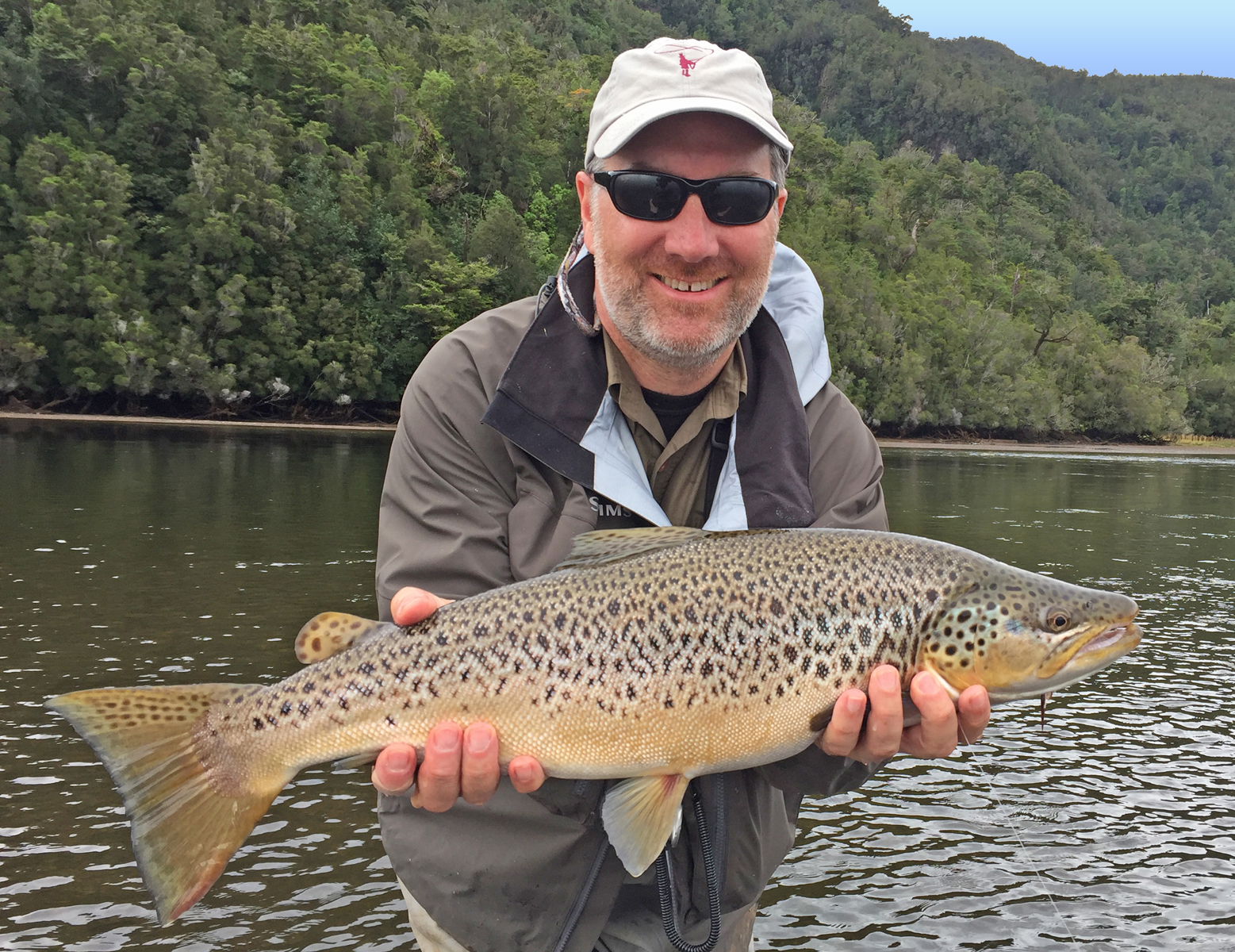
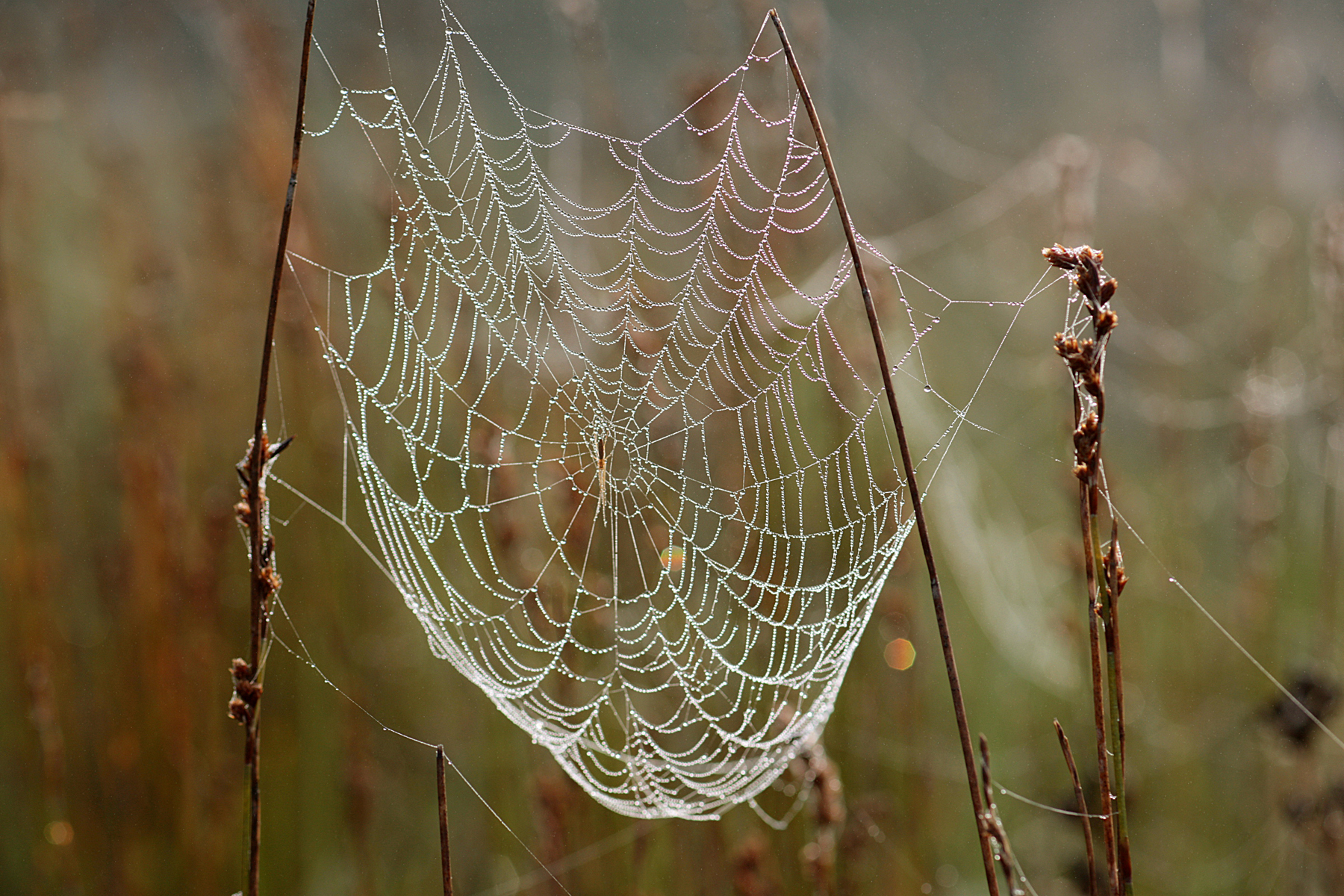
Initially, trout populations were established in a few rivers and then spread outward - from rivers like the Petrohué, Puelo, Futaleufú, Cisnes, Simpson, Baker, Serrano, and Río Grande - to create self-sustaining populations. After years of exploration, we concluded that in many of these remote rivers, trout had eventually reached the ocean and migrated along the coast. Trout can tolerate some salinity and adapt to marine environments - especially anadromous strains, like sea-run browns in the Rio Grande and Serrano. Western Chile’s fjords and islands are fed by massive rainfall and rivers, creating low-salinity ocean areas that resemble lakes. Here, even non-anadromous trout move comfortably from river to river.
Today, trout thrive in most remote rivers across 1,800 kilometers of Chilean fjords - from Puerto Montt to Tierra del Fuego. This colonization was essentially an uncoordinated effort, blending government programs, private action, and natural fish migration.


Initially, trout populations were established in a few rivers and then spread outward - from rivers like the Petrohué, Puelo, Futaleufú, Cisnes, Simpson, Baker, Serrano, and Río Grande - to create self-sustaining populations. After years of exploration, we concluded that in many of these remote rivers, trout had eventually reached the ocean and migrated along the coast. Trout can tolerate some salinity and adapt to marine environments - especially anadromous strains, like sea-run browns in the Rio Grande and Serrano. Western Chile’s fjords and islands are fed by massive rainfall and rivers, creating low-salinity ocean areas that resemble lakes. Here, even non-anadromous trout move comfortably from river to river.
Today, trout thrive in most remote rivers across 1,800 kilometers of Chilean fjords - from Puerto Montt to Tierra del Fuego. This colonization was essentially an uncoordinated effort, blending government programs, private action, and natural fish migration.
While we don’t generally support the introduction of invasive species, the case of salmonids in Chile is unique. We aim to appreciate their presence while also protecting the few remaining rivers that harbor only native species.


A rich marine environment
The intertidal zones are rich in food, supporting dense populations of large trout. Glacial rivers often host incidental trout or salmon seeking clear tributaries for spawning. We also believe trout may venture into fjords and even open ocean during periods of high precipitation, swimming in surface layers of freshwater. These fish can dive momentarily into deeper, saltier water to feed on marine fish and crustaceans. This behavior helps explain the seasonal arrival of big fish in some rivers before the spawning season.
We’ve explored the northern third of this territory aboard a motor yacht, navigating calm fjord waters isolated from the open ocean by a coastal mountain range west of the Andes. Many Andean rivers drain into this protected oceanic zone, which behaves more like a massive lake.


Currently, we run four to five weeklong trips each summer aboard our 90-ft motor yacht - our floating lodge. It’s spacious, comfortable, and safe with dual engines, ample water for showers, 24/7 electricity, satellite Wi-Fi, and an experienced crew. Our chef serves excellent meals, and accommodations include three guest staterooms (each with a private bath), two guide rooms, and a crew area. We host just four anglers plus two guides (myself included), and sometimes two non-fishing nature explorers.
Observation decks offer views of penguins, dolphins, whales, sea lions, and seabirds like albatross, petrels, and pelicans. Hikes through temperate rainforest or along riverbanks give guests the chance to spot endemic flora and fauna.


Fishing the fjords
Each week, we fish 8 to 10 rivers. Some are small with just a few pools; others are larger but always wadable.
We fish near the sea or hike upstream. We target rainbow and brown trout, as well as silver salmon, robalo, and rollizo - native ocean fish.
“Our record is a 1-meter brown trout”
Fish here are aggressive. It’s common to witness large trout ambushing minnows from deeper channels in sudden explosive bursts. They eagerly take flies, but stealth matters - cast 1.5 meters ahead, beside, or even behind them. We mostly use streamers: Woolly Buggers with rubber legs (great crab imitations), and Zonkers in various colors for minnows.
Every trip, someone hooks –and often loses - a trout over 80 cm. Our record is a 1-meter brown trout. If you want a shot at landing the biggest trout of your life, gear up properly:

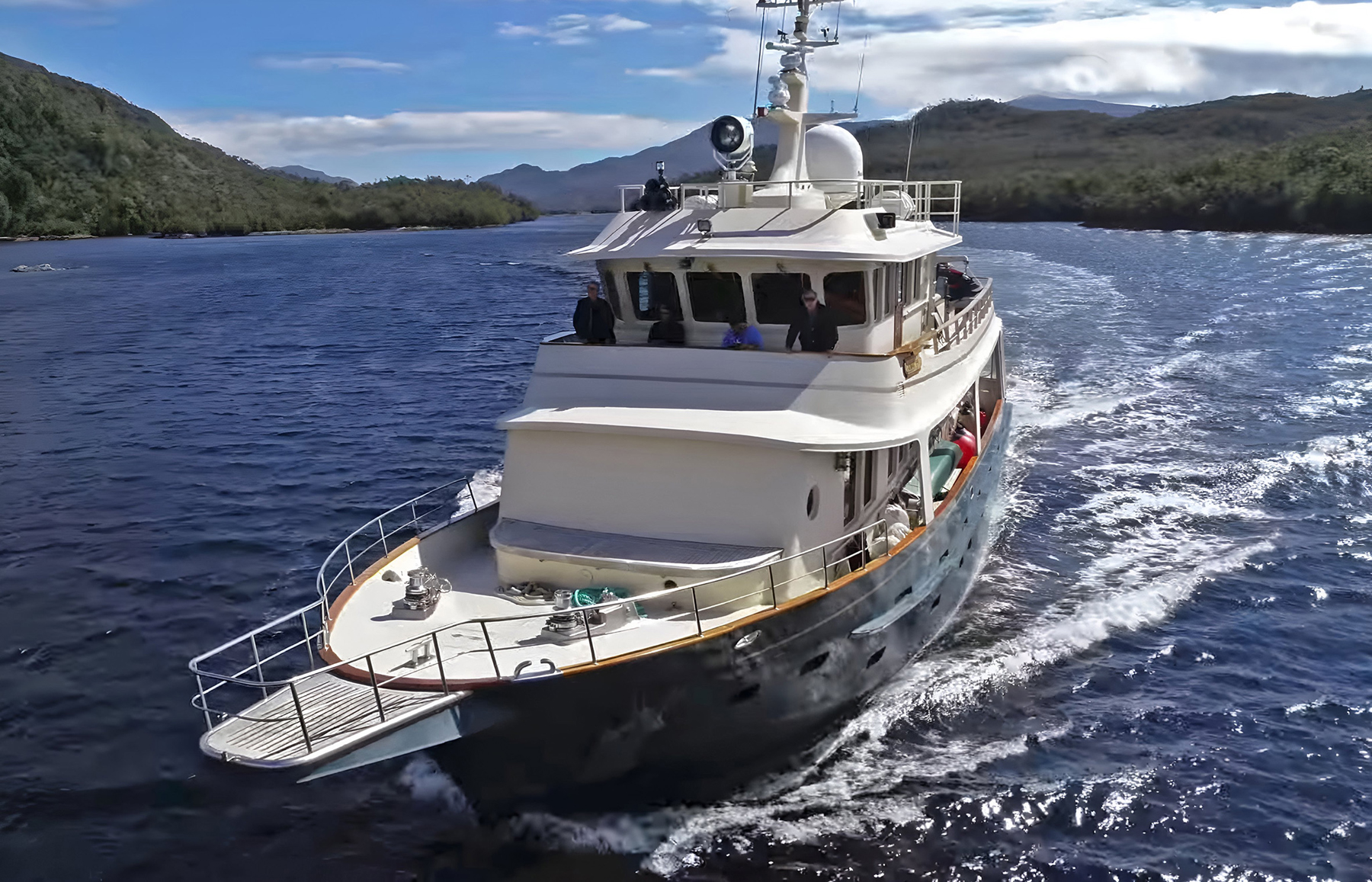
A high-quality large-arbor reel with smooth drag is essential. Bring floating and sink-tip WF lines, a dozen 8–9 ft 0X leaders, a strong 20 lb tippet spool, and a good 7-weight rod. And don’t forget durable, breathable waders, cleat-free wading boots, and a proper waterproof jacket. Please - no grandfather’s Pflueger reel or a yellow Mickey Mouse poncho. Yes, I’ve seen it all.
Note about weather
I spent two and a half weeks fishing the rivers of the Chilean fjords between late December 2024 and early January 2025. During that time, we encountered unexpected hot and dry conditions, which caused river flows to be lower than normal and temperatures to rise rapidly.
While the fishing remained good when water temperatures stayed below 15°C, it slowed dramatically when they approached 20°C — and stayed slow for several days.
Based on this experience, we concluded that to avoid weather events similar to these, trips should not be scheduled during the peak summer months (December to mid-March). Instead, the ideal window for planning these trips begins in late March to April.

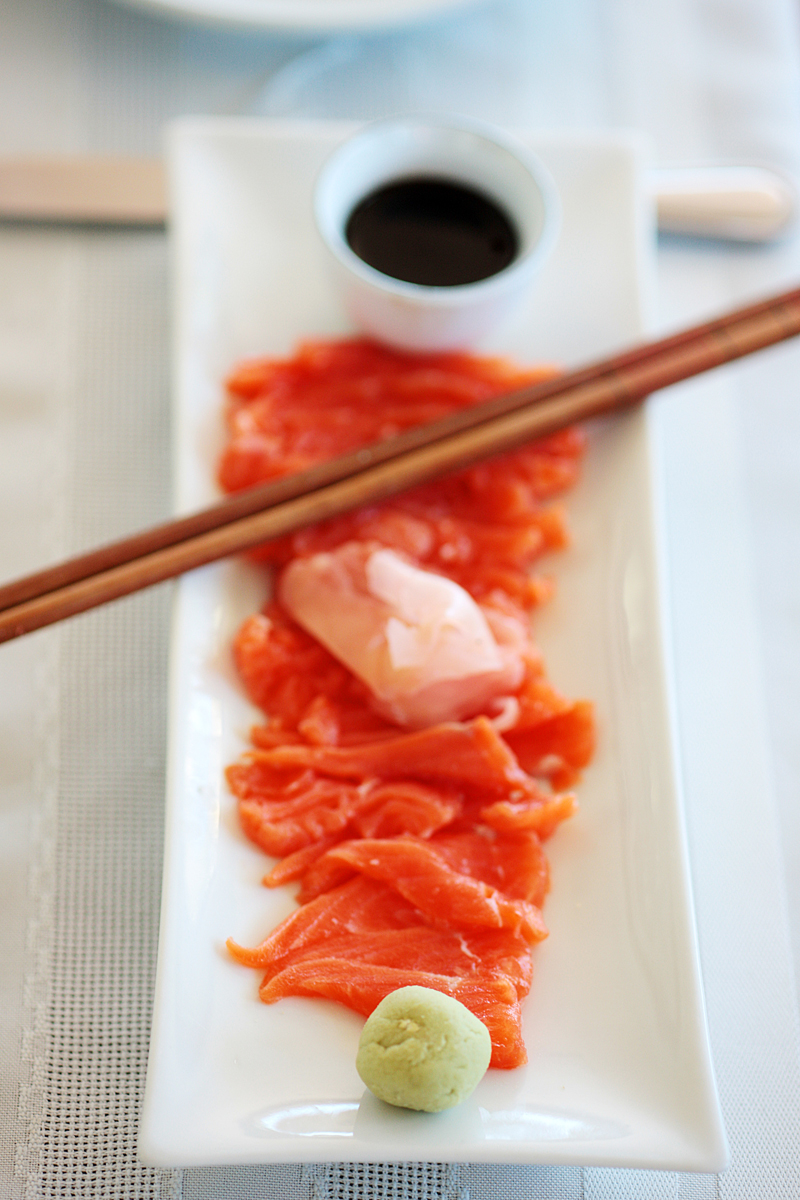
Trip Logistics
Fly into Santiago, Chile on a Friday, then take a 2–3 hour domestic flight south to Balmaceda. A driver will transfer you on a 2-hour drive to our base port, where you’ll overnight at a beautiful hotel overlooking the Aysén Fjord. Early Saturday, board the yacht and begin your journey west along the fjord. You’ll fish for six days, returning to port the following Saturday, disembarking by 9:30 a.m. for the return drive to Balmaceda. We recommend combining this experience with a visit to one of the great fly-fishing lodges near Coyhaique.
Exploring and fishing these remote rivers is a rare privilege. Few places remain on Earth where you can fish in complete solitude, where a bird might perch on your boot as you sit on a log, taking it all in.
Pristine wilderness, oversized trout, breathtaking scenery, top-tier accommodations, and exceptional service make this a trip worthy of any bucket list. For more info:

